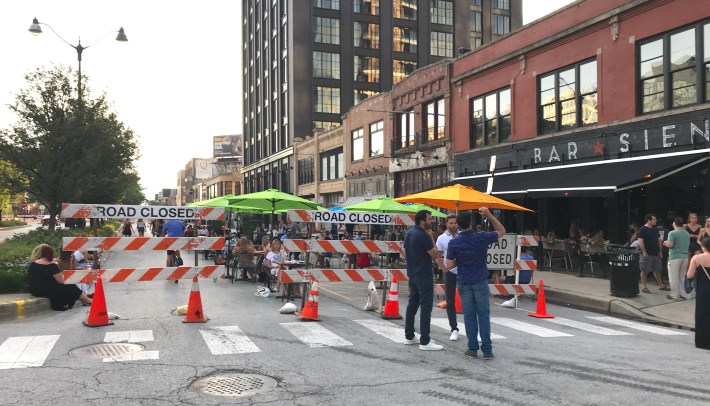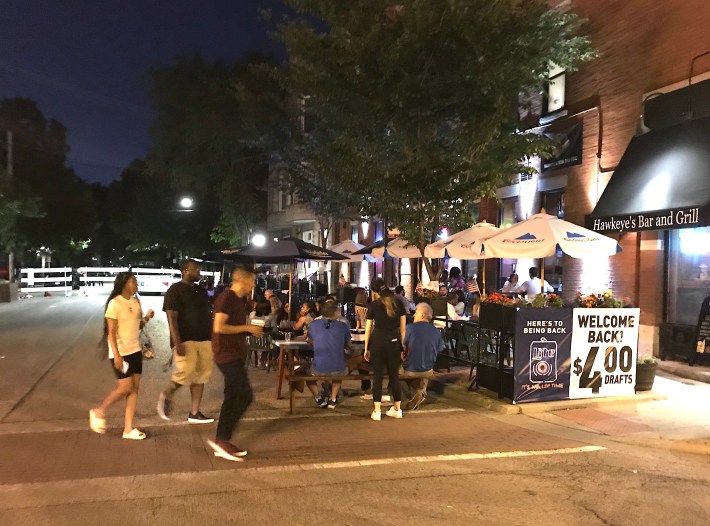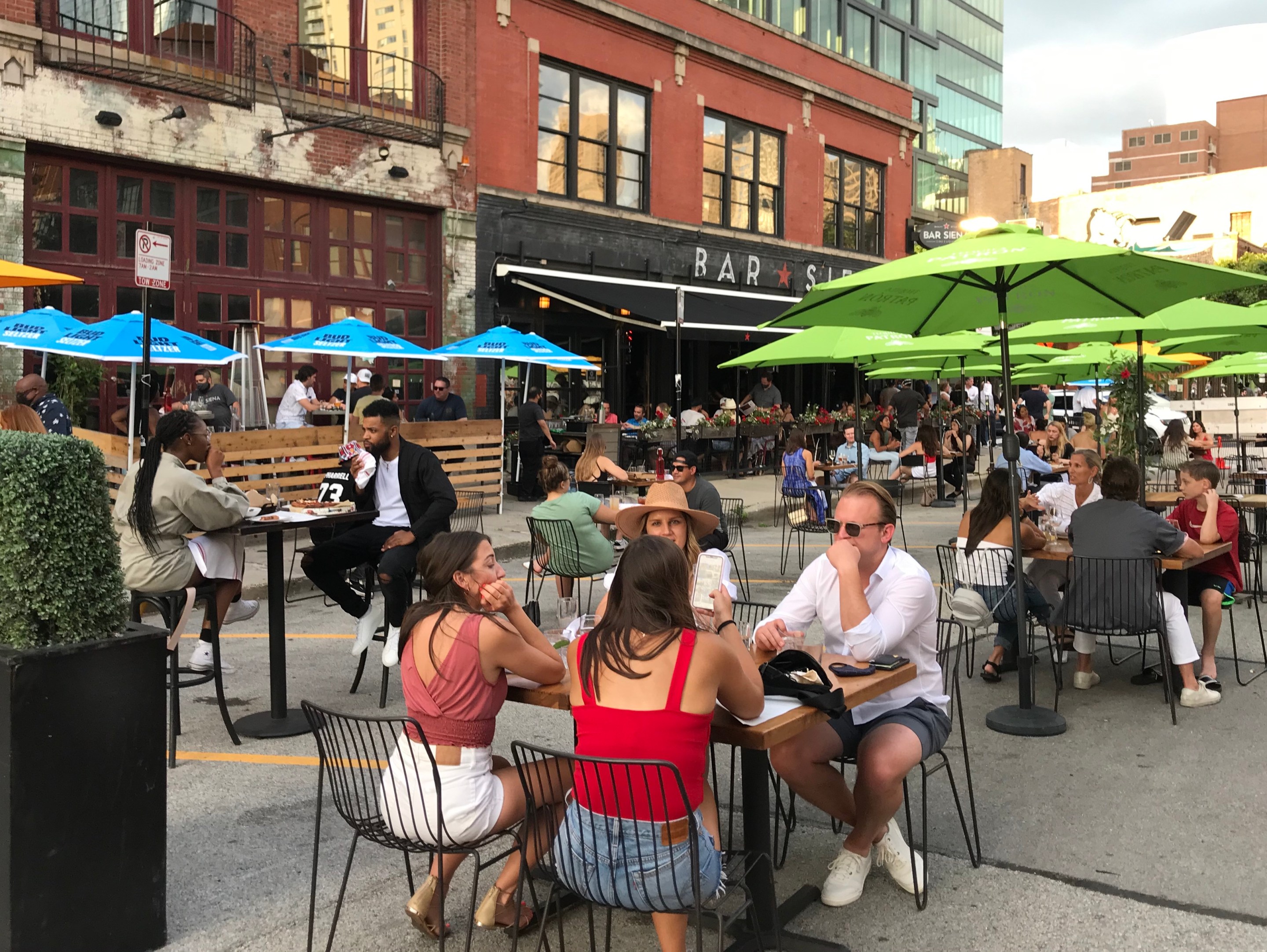As more Chicago roadways become pedestrianized Cafe Streets to make way for socially distanced outdoor dining during the COVID-19 pandemic, it's clear that turning car space into people space can be good for restaurant owners' bottom lines. The city should definitely consider making this a recurring warm-weather program, and possibly pedestrianizing some of these streets on a permanent basis.
On May 29 Mayor Lori Lightfoot announced the following Cafe Streets:
- Chatham: 75th Street from Calumet Avenue to Indiana Avenue
- Lakeview: Broadway from Belmont Avenue to Diversey Parkway
- Little Village: 26th Street from Central Park to Harding Avenue
- Rush and Division: Rush Street from Oak Street to Cedar Street
- Near West Side: Taylor Street from Loomis Street to Ashland Avenue
- West Loop: Randolph Street from Expressway no further than Elizabeth Street
Two weeks later on the weekend of Friday, June 12, the Broadway and Rush Cafe Streets finally opened, and appeared to be hugely successful in terms of attracting customers. (I’ll let the Chicago Department of Public Health decide whether these interventions are working from a pandemic safety standpoint.) And recently a Cafe Street has launched in the Heart of Italy district on Oakley Avenue at 24th Street on the Lower West Side.
Last Wednesday Lightfoot announced the following Cafe Streets:
- Andersonville: Balmoral Street, pedestrianized on both sides of Clark Street, started Friday
- Chinatown: Chinatown Square, the car-free shopping arcade north of Archer Avenue between Wentworth to Princeton, will have outdoor seating
- Near West Side: As previously announced, Taylor Street will be pedestrianized from Loomis Street to Ashland Avenue
- Edison Park: Oliphant Avenue will be pedestrianized from Northwest Highway to the first alley to the north
- Chatham: Sidewalk dining on 75th Street from Calumet Avenue to Indiana Avenue
In addition to the Chatham plan being watered down from a car-free street to just tables on the sidewalk, the Little Village Cafe Street was cancelled due to concerns from business owners that they would lose money if 26th was opened to walking and dining. That means that no Cafe Streets are currently planned on predominantly Black- or Latino-owned restaurant strips.
This weekend some of the new Cafe Streets opened, and on Saturday I stopped by the ones on the Randolph Street dining district in the West Loop, which includes restaurants owned by star Chicago chefs like Stephanie Izard and Rick Bayless, and Taylor Street, which includes several Italian restaurants, plus other eclectic eateries.

The wide service drives on Randolphs were densely populated with cafe seating and diners when I stopped by in the early evening, and it was also possible to safely bike on them at a moderate speed. (The central travel lanes were still available to drivers.) The Bandit cocktail lounge near Randolph and Green Street had even laid out astroturf, put couches on it, and decorated the area with tropical plants, sort of creating a "parklet" mini park.

Around 9:30 p.m., the Taylor Street pedestrianized area was more subdued, with only a few businesses taking advantage of the program to put out tables. But the cafe areas at Vintage Bar and Hawkeye's Bar and Grill were bustling, which suggests that if restaurateurs and bar owners build seating areas on Cafe Streets, customers will come.

Interestingly, in an interview last week, Chicago Department of Transportation chief Gia Biagi told Streetsblog that the city isn't asking restaurants on Cafe Streets to compensate the city's much-despised parking concessionaire for the loss of meter revenue on the pedestrianized streets, although she was vague about exactly how the parking contract requirements will be met. "We are working with the finance department and looking at where we can make that accommodation, obviously. We're trying to do everything we can to support this program, so we're working directly with Finance and the parking company in each case and trying to mitigate any payments if we can in every case.

So basically we're racking up fees and figuring out how to pay for them later?
"Not necessarily," Biagi responded. "There are some nuances to when the meters are in and out of service and the hours of operation, so I'll leave that to my colleagues at Finance who know it better than I do. But we're looking in every case to see if we can accommodate that. Obviously [the meter contract] is not ideal, but it's something that we want to make work."




